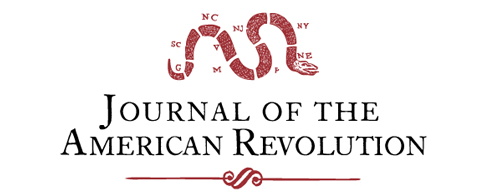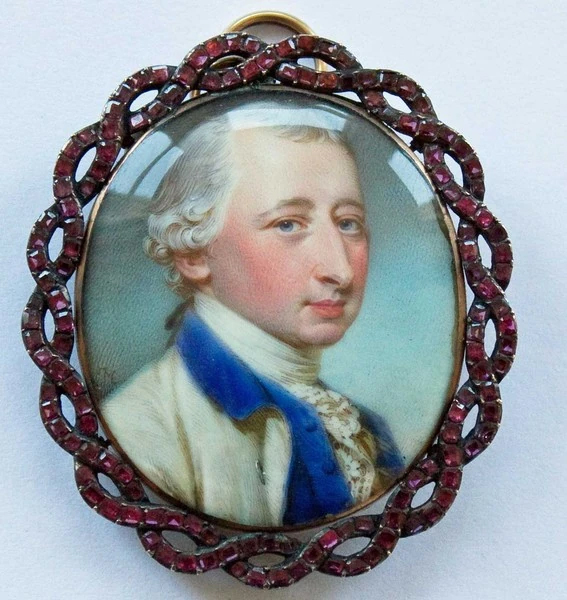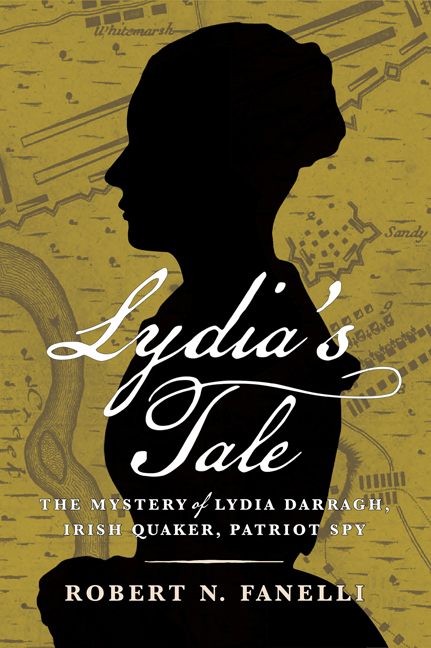A few weeks after the Lexington alarm on April 19, 1775 a team of four men set out with congressional approval on a spying expedition through the Maine wilderness, heading for Quebec. Their goal was to determine whether Maine was threatened by the French Canadians, or whether the French wished to cooperate with the Revolution. The men traversed hundreds of miles, were detained by French-Canadian bailiffs, escaped, and then successfully outran local Wabanaki tribal members. They made their way home a few weeks later with a report that would inspire Benedict Arnold to attack Canada, yet their account has been almost lost to history. This is their story.
The first shots at Lexington and Concord set off shock waves across the Maine settlements. On hearing the news, John Stinchfield of New Gloucester and his five sons left their plows in the field to march in support of Falmouth more than thirty miles away. These colonists felt uniquely vulnerable to invasion based on a long history of devastating attacks.
The French Catholic settlements in Quebec and their partners in the Wabanaki confederacy resented the intrusion of British American and Protestant colonists into the borderlands of Canada. While the American colonies grew and spread by extensive immigration, the French Canadians remained much less populous and relied on working with and proselytizing Indigenous peoples. Once the tribes were converted to Catholicism, they acted as trusted allies to hold back colonial intruders. This resulted in waves of fighting sweeping back and forth over the northern parts of New England, with violent depopulation of nascent American towns followed by slow rebuilding before the next assault. The Wabanaki nations occupying the area of central Maine were the Norridgewock, Passamaquoddy, and Penobscots. These nations had prevented the permanent establishment of colonies by periodically burning the settlements, capturing or killing residents and destroying cattle and crops. The Chaudiere and Kennebec Rivers provided a convenient Native route from Canada to the Maine frontier, at that time a province of Massachusetts.
A previous settlement at New Gloucester had been destroyed in 1737. A few men were sent to re-establish the town several years later. John Stinchfield arrived in 1753 and helped construct a fifty-by-fifty-foot blockhouse of pine with a solid oak door, furnished with two swivel cannons and firing slots in the walls. [1] It served as a home and refuge against Wabanaki attacks for the original twelve families of the town. They were attacked that same summer, with two men captured and one killed. [2] The start of the French and Indian war shortly thereafter meant the settlers were often confined to the blockhouse for the next six years. A second blockhouse was erected six miles down the road in New Boston (later Gray) after the settlers there were burned out in 1755.[3] The Articles of Capitulation ending the Canadian part of the French and Indian War were signed on September 18, 1759, transferring Canada to the British and ending these constant threats.
Only sixteen years later the American Revolution broke out. This threatened renewed attacks from now-British Canada through northern Maine. At the same time, the conquered French Canadians were unhappy with their new British overlords, raising the possibility that they might be neutral or even become allied to the American Patriots. On the morning of April 25, six days after Lexington, the selectmen of Falmouth (later Portland) were notified of the War and called a town meeting to set up a militia to respond to any attacks by the British or Wabanaki. They contacted the provincial congress in Boston for assistance.[4]
Five days after an American force seized Fort Ticonderoga, on May 15, 1775 the second provincial congress of Massachusetts read a May 5 letter from Hon. Enoch Freeman Esq., selectman of Falmouth, expressing his concern about an invasion via Canada. He informed them that he had chosen two men, Jabez Matthews and David Dinsmore of New Gloucester, to undertake a scouting mission to Canada and determine whether there were any British or Wabanaki plans for an invasion of Maine. He also sent a letter to Remington Hobby, a minister and selectman of Vassalborough on the Kennebec, to procure one or two hunters to accompany the pair.[5]
The provincial congress’s committee agreed with the selectmen’s invasion concerns and with the choice of Matthews and Dinsmore to “transmit the intelligence they may receive with all convenient speed.” They also agreed that their expenses would be paid from the treasury.[6]
Jabez Matthews, the leader of the scouting party, was born Apr 27,1745 in Framingham, Massachusetts and moved with his parents to New Boston Plantation, Maine near the time that the town’s blockhouse was constructed.[7] Jabez was thirty when he was selected to travel to Canada. He had been married for three years to his wife, Sarah Tufts, and had a toddler daughter at home.
David Dinsmore or Densmore, the son of Scots Irish immigrants, was born about 1746 in Londonderry, Ireland and grew up in Chester, New Hampshire.[8] He and his brothers arrived in New Gloucester prior to 1771, when he was married in North Yarmouth to Sarah Bradley. He was about twenty-nine years old at the time of the scouting journey, and like Jabez Matthews he also had a young child at home.
Remington Hobby lived in Vassalborough in 1775, about fifty miles northeast of New Gloucester along the Kennebec River.[9] He was Harvard-educated and one of the most prominent citizens of Vassalborough, serving as minister, town meeting moderator, selectman, and treasurer during the war. Although Freeman asked him to procure hunters for this first scout, two New Gloucester men were chosen instead. Hobby communicated with two Vassalborough men, Samuel Berry and Dennis Getchell, who undertook a later scouting mission immediately preceding the Arnold Expedition in the fall of 1775.
The two hunters chosen for the first scout were Benjamin Hammon or Hammond, “a great hunter and scout” and James Stinchfield, a “mighty hunter.”[10] Benjamin Hammond, born in 1735, was one of the earliest settlers of New Gloucester, taking up residence in the blockhouse with his wife Sarah Scriggens, whom he married in 1758 during the French and Indian war. He served as a sentinel in that war, enlisting from North Yarmouth in 1755 through 1760.[11] He was forty years old at the time of the Matthews scouting party, and had three sons and four daughters at home, the youngest daughter having just had her first birthday.
James Stinchfield was born in 1745 in Gloucester, Massachusetts and came with his parents and four brothers to reside in the New Gloucester blockhouse, built by his father, in 1755. James married Sarah Parsons in 1774, and the pair lost their first child, an infant daughter, in February 1775.[12] James was described as “a mighty hunter, and well acquainted with the woods, and with the Indian manner of warfare.”[13] The Stinchfield men had ranged across Maine and spent long periods in the backwoods, walking Wabanaki trails, developing friendships with the tribal people and adopting their survival modes.[14] James was thirty years old at the time of the Matthews scout.
Hammond and Stinchfield were well-acquainted. In addition to living together in the New Gloucester blockhouse and participating in its defense for six years, they were later interrelated by marriage. James’s wife Sarah was the eldest daughter of William Parsons (an early New Gloucester resident), and in later years two of her younger siblings married two of Benjamin Hammon’s children.
The Scout
While awaiting a response from Congress the scouts had almost three weeks to prepare for the journey. Allowing three to four days to bring the response back from Boston, they likely departed around May 19. These four men, Jabez Matthews, David Dinsmore, James Stinchfield and Benjamin Hammond, set off up the Kennebec and Dead Rivers to Lake Megantic and the Chaudiere River, following the Wabanaki trails leading to Quebec on their spying mission. This path was the same that would shortly be followed by Benedict Arnold on his famous expedition.
They carried heavy backpacks and probably used birchbark canoes to ascend the Kennebec. The group were armed with smoothbore muskets.[15] Gamebirds, moose, deer, caribou, bear, and wild turkey are mentioned frequently in Stinchfield hunting stories.[16] The men were also familiar with snares and traps. Matthews carried a concealed letter of introduction from “a gentleman” in Yarmouth (probably Enoch Freeman Esq., who had selected the scouts), addressed to another “gentleman” in Quebec City.[17]
In the spring of 1775 three commissioners were sent on a fact-finding mission by the British authorities in Canada.[18] François Baby was a fur trader who kept a diary of the mission; Gabriel-Elzéar Taschereau was seigneur (semi-feudal overlord) of the province of Nouvelle-Beauce, and Welsh lawyer Jenkin Williams accompanied them.[19] In May the group visited Taschereau’s province, about twenty-five miles south of the St. Lawrence River along the east bank of the Chaudiere River. They stopped in the St. Marie parish to “establish the militia” in case of American attack; like the colonists, the Canadians feared this trail could be used for an invasion by their opponents, as indeed it later was by Arnold.[20] A sixty-seven-year-old local, Etienne Parant, was appointed captain, commanding Lt. Julian Landry, a few sergeants, and three bailiffs. One of these bailiffs, Philip Valiere, was identified as a loyalist, and another, Claude Patris (“Patry” in Baby’s account) was described as having rebel sympathies. The third bailiff was Ignace Ferland, who refused to accept Taschereau’s authority to form the militia and so was also later accused of rebel leanings.
Since Canadian authorities had already been alerted, the four scouts were detected shortly after arriving on the Chaudiere River. This was around June 4, based on a fifteen-day journey in the woods.[21] A journal entry written in St. Marie on June 26,1776 reports that after the May 1775 militia formation, officer serving under Gen. Guy Carleton, governor of Quebec, “had a government order sent to the said Capt. Parant to arrest . . . spies who . . . were traveling up to La Beauce through the Chaudiere River.”[22] The scouts first encountered French-Canadian habitants forty miles up the Chaudiere from the St. Lawrence River. They travelled fifteen more miles before French bailiffs stopped them.[23] This would be the approximate vicinity of St. Marie in Nouvelle Beauce, arriving in the morning, about June 6. Captain Parant gave orders that the four be apprehended, and they were taken to the center of the village and placed in bailiff Claude Patris’ house next to the church. Like many habitant cabins, it was a log structure roughly divided into two rooms with a board partition and a window in the back. The scouts’ guns were locked into this back room. Six armed men guarded the front door. An English-speaking neighbor, Robert Forbes, was brought in to interpret for the French bailiffs.
The scouts posed as simple hunters during discussions with their captors that day. They bluffed that General Carleton would release them should he hear of their arrest. However, Matthews’ incriminating letter was eventually discovered and this indicated that they were scouts, not hunters.[24] Captain Parant and his wife Marie-Geneviève Lefèbvre were both rebel sympathizers but had to maintain the pretense in front of the loyalist bailiff Valiere that the men were being properly guarded.[25] Parant agreed to send Matthews with two guards to Quebec City the next morning on horseback to plead his case to Carleton. Parant knew the “spies were at Claude Patry’s house, warned them to leave because he had orders to arrest them . . . [but] far from arresting their spies, he had, on the contrary, helped their passage. . . . During the night he sent the wife of a certain Provencal, his neighbor, who spoke English” to warn them.[26] This woman was Marie-Anne Forbes, wife of the interpreter Robert Forbes.[27]
Robert “Luc” Forbes was about thirty-five years old in 1775. He was Catholic and Scots Irish, born in Londonderry, Ireland (like David Dinsmore), and fought on the Plains of Abraham with Gen. James Wolfe in 1759. He was the interpreter for the Baby commissioners while they were in St. Marie.[28] He was first married in 1764 in Quebec City, but his wife, Marie-Louise Sophie Vachon, passed away in 1773 leaving him with three young children. He married twenty-six-year-old Marie-Anne Gosselin five months later.[29] She was a native Québécois but also spoke English, probably learned from Robert. The pair had welcomed a daughter less than a year prior to the scout. She was a plump and garrulous person who made the perfect accomplice to send to the scouts, as she spoke their language and was friends with Patris’ wife. She could have easily obtained admittance under the guise of bringing food for the captives, for example.
The next morning Matthews was able to postpone the trip to Quebec until noon, likely using sickness as a ruse. While on horseback he developed a violent “colic” (diarrhea and vomiting) so severe that he was unable to ride. The timing of this was very convenient, suggesting that he may have been given an emetic for this purpose, such as the bayberry that commonly grew in the area. He was then allowed to return to the cabin unaccompanied, another sign that Parant was less than eager to send him on to Quebec City. At dusk he was able to quietly pry out the rear window of the cabin and retrieve the guns and ammunition. He whispered an escape plan to his three compatriots still locked in the front room. He then surprised the guards at the door with his loaded gun, scaring them off. The three captives broke through the partition door and exited through the removed back window.
While the scouts may have been aware of the sympathetic views of Parant and some of the bailiffs, they made good their escape by traveling ten miles upriver on foot during the night. “The next morning [Parant] sent Julien Landry, his lieut. . . . Ignace Ferland . . . [and four others for a total of six men] . . . to the neighboring parish [in pursuit], but they went slowly for fear of catching them.”[30] A large party of hostile Wabanakis began trailing them along the Chaudiere, but with first light the scouts came upon two dugout canoes which allowed them to narrowly escape.[31] To confuse their pursuers, they traveled downriver for two days, camping in the woods at night, before turning back upriver about June 11.
They spent the next fifteen days retracing their journey up the Chaudiere River to Lac Mégantic and through the wilderness to the Kennebec River.[32] On Sunday June 26 Matthews was back in Falmouth, where he met a friend, Rev. Thomas Smith. He related his story of the journey, and Smith’s diary records that the scouts had a “rough reception of some of the Canadian Indians and some French bailiffs.” He also noted that “he and the three men that went with him would have been confined in gaol and not got back again at all” but for “the good disposition of the French people, especially the women” and “from what he could learn from a clever fellow who interpreted for him [ie, Forbes], the French people are determined not to come out against us.”[33] Matthews then proceeded to Boston, where he gave his report to the provincial congress on June 30.[34] In spite of their capture and evasion the total journey took only six weeks, and the habitants they encountered were supportive of the Revolution. This would have been encouraging news to those Patriots already considering an invasion of Canada.
Matthews reportedly charged the congress “one dollar per day” ($60 for two months) but they only received “half that.”[35] The congressional record states that they received £30,[36] consistent with a complaint of half payment if they had been gone sixty days, but their charge should have been closer to £40, not £60, at £1 per day for a six-week trip. It is possible that Matthews counted the “two months” as running from their initial hiring on May 5 to July 5, which would have accounted for additional travel back and forth from Boston. At any rate, it left the spies disgruntled with their pay.[37]
Although these men provided the provincial congress with information about the length and challenges of the route to Canada, their situation was quite different than that faced by Benedict Arnold’s expedition months later. They were only four men, and Stinchfield and Hammond were well-versed in the route and in backwoods skills. These two were among the most experienced hunters in Maine. In contrast, Arnold’s expedition crowded over a thousand men onto a trail with only a few hunters and would have rapidly depleted the game available. The failure to recruit any of the four men who went on the scout for the fall expedition was a fatal error, as they were the only men with recent knowledge of the entire route.
After the Scout
Jabez Matthews enlisted as a 2nd Major in Col. Timothy Pike’s 4th Cumberland Regiment (Maine) in 1776.[38] He was referred to as “Col. Mathews” in later life. Probably because of this scout, he is sometimes incorrectly credited with being on the Arnold expedition itself. He lived in Gray until 1794, when he relocated with his wife and five children to Winslow, Maine. He later moved across the Kennebec River to Waterville and died there on June 28, 1828 at the age of eighty-three.[39]
At age thirty-three, four years after the scouting trip to Canada, David Dinsmore enlisted as a sailor on the brig Vengeance for the Penobscot Expedition of 1779. The fight was a disaster for the patriots, and the Vengeance, along with most of the other ships, was burned on August 14 to prevent capture by the British. Dinsmore along with hundreds of others had to flee on foot through the backwoods without food or shelter.[40] His home in New Gloucester was 120 miles distant, but this was only a third as far as he had traveled on the scout to Canada. Within a decade he relocated his growing family to the Bakerstown Plantation (later renamed Minot, Maine). He and his wife Sarah had eight children. He died on January 10, 1824 in Minot, aged about seventy-eight.
Benjamin Hammond’s family lore gives his rank as captain and suggests he participated in the siege of Ticonderoga in July 1777, but contemporary documentation is lacking. He was said to have died of sickness following the battle, leaving his wife Sarah a forty-year-old widow with seven children ranging from age three to seventeen.[41] She remarried and lived in New Gloucester into her nineties, dying in 1829. His early death meant he left no stories of his role in the pre-Arnold expedition scout.
James Stinchfield did not serve again in the Revolution. There are many published legends referencing “Stinchfield,” some of which may refer to his brothers, about life in the backwoods. He and his wife had twelve children of whom nine lived to adulthood. He remained in New Gloucester most of his life, but also spent several years in Monson, Maine. He died in New Gloucester in 1828, a month shy of eighty-three years of age.[42]
The Forbes family later achieved considerable notoriety. A year after the Revolution ended, Robert and his pregnant wife Marie-Anne left their rebel reputations behind and migrated to Maine. During the early spring of 1784, they chose to follow Arnold’s trail in reverse and on foot, with tragic consequences. Three of their five children starved to death, and the parents and two children only narrowly survived their eleven-week ordeal.[43] Their last (in utero) child was miraculously born healthy shortly after they were rescued. They went on to settle in New Gloucester near the three remaining scouts and their various rescuers. Robert died there prior to 1816, after which Marie-Anne Forbes moved to Foxcroft to be near her surviving daughter.
One wonders what would have transpired had the four men been paid what they felt was fair and agreed to guide and hunt for the Arnold expedition. If Soules’ report is correct about the £30 discrepancy, the chronic shortage of money during the early weeks of the Revolution may have doomed the invasion of Canada, as in the ancient proverb cited by Benjamin Franklin in 1758:[44]
For want of a nail the shoe was lost,
For want of a shoe the horse was lost,
For want of a horse the rider was lost,
For want of a rider the battle was lost,
For want of a battle the kingdom was lost,
And all for the want of a horseshoe-nail.
[1] T.H. Haskell, The New Gloucester Centennial, September 7 1874 (Hoyt, Fogg and Donham, 1875), 23.
[2] R.A. Weston, H.E. Mitchell, F.E. Daggett, L.A. Reed, Gray and New Gloucester Register 1905 (H.E. Mitchell Publishing company, 1905), 5.
[3] Ibid, 27-8.
[4] Haskell, New Gloucester Centennial, 30.
[5] Enoch Freeman, Extract of a Letter from the Hon. Enoch Freeman, Esq., to the Massachusetts Congress (P.C. Massachusetts, Editor. Northern Illinois Digital Library,1775). digital.lib.niu.edu/islandora/object/niu-amarch%3A97864.
[6] James Phinney Baxter, The Baxter Manuscripts. Vol XIV (Lefavor-Tower, 1910), 246.
[7] www.findagrave.com/memorial/51394016/jabez-mathews.
[8] J.C. Chase, History of Chester, New Hampshire, including Auburn : a supplement to the History of old Chester, published in 1869 (Derry, NH,1869), 303.
[9] Caroline E. Robinson, D. Goodwin. The Gardiners of Narragansett: being a genealogy of the descendants of George Gardiner, the colonist, 1638 (Higginson Book Co., 1919), 224-5.
[10] Frederick Stam Hammond, History and genealogies of the Hammond families in America : with an account of the early history of the family in Normandy and Great Britain. 1000-1902 (Evan & Burkhart Printers, 1904), 788-790; William D. Williamson, The history of the state of Maine: from its first discovery, A.D. 1602, to the separation, A.D. 1820, inclusive (Glazier, Masters & Co., 1832), 418.
[11] Hammond, History and genealogies of the Hammond families, 788.
[12] Stinchfield, Stinchfield Stanchfield Family, 8.
[13] Williamson, History State of Maine, 407.
[14] J. C. Stinchfield, History of the town of Leeds Androscoggin county Maine from its first settlement June 10,1780 (Press of Lewiston Journal, 1901). Contains extensive stories of the Stinchfield men, particularly James’ brother Thomas, in early Maine.
[15] Samuel Soule. “General Arnold’s spies.” The National Magazine: A Monthly Journal of American History, Magazine of Western History 6, no.1 (1887): 487. Soule was the grandson of Matthews and heard the story directly from him.
[16] Stinchfield, History of the town of Leeds.
[17] Soule, General Arnold’s Spies, 488.
[18] Guy Carleton, Journal of the Most Remarkable Events which happened in Canada between the months of July, 1775 and June, 1776 (L.a. Archives and Canada, Editors. 1776), 121.
[19] Francois T. Baby, Gabriel Tascherau, Jenkin Williams, Quebec during the American Invasion, 1775-1776. The Journal of Francois Baby, Gabriel Tascherau & Jenkin Williams (State University Press, 2005), 59-63.
[20] Ibid.
[21] Rev. Amasa Loring, History of Piscataquis County, Maine, from its earliest settlement to 1880 (Hoyt, Fogg and Donham, 1880), 121-22. This tertiary source incorrectly asserts that the group was jailed in Quebec City.
[22] Baby, Quebec during the American Invasion, 59.
[23] Soule, General Arnold’s Spies, 487.
[24] Ibid, 488.
[25] Baby, Quebec during the American Invasion, 61.
[26] Ibid., 59.
[27] William R. Lapham and Silas P. Maxim, A History of Paris, Maine from its Settlement to 1880 with a History of the Grants of 1736 and 1771 Together with Personal Sketches, a copius genealogical register, and an Appendix (The Authors, 1884), 386-88; Williamson, History State of Maine, 418.
[28] Baby, Quebec during the American Invasion, 61.
[29] www.genealogy.com/forum/regional/countries/topics/ireland/65597/.
[30] Baby, Quebec during the American Invasion, 60.
[31] Soule, General Arnold’s Spies, 489.
[32] Williamson, The history of the state of Maine, 418n.
[33] Thomas Smith. Extracts from the Journals Kept by the Rev. Thomas Smith, Late Pastor of the First Church of Christ in Falmouth (Thomas Todd, 1821), 46.
[34] The Journals of Each Provincial Congress of Massachusetts in 1774 and 1775: And of the Committee of Safety, with an Appendix, Containing the Proceedings of the County Conventions-Narratives of the Events of the Nineteenth of April, 1775-Papers Relating to Ticonderoga and Crown Point, and Other Documents, Illustrative of the Early History of the American Revolution (Dutton and Wentworth, 1838), 227.
[35] Soule, General Arnold’s Spies, 488.
[36] Journals of Each Provincial Congress of Massachusetts, 425.
[37] Soule, General Arnold’s Spies, 489.
[38] Massachusetts Soldiers and Sailors of the Revolutionary War. Vol. 10 (Wright & Potter Printing, 1902), 348, 359.
[39] E. C. Whittemore, The centennial history of Waterville, Kennebec County, Maine, including the oration, the historical address and the poem presented at the celebration of the centennial anniversary of the incorporation of the town, June 23d, 1902 (Waterville, Executive Committee of the Centennial Celebration, 1902), 130.
[40] Massachusetts Soldiers and Sailors, 348.
[41] H. Clarence Houston, The Thirty-second Maine regiment of infantry volunteers: an historical sketch (Press of Southworth Brothers,1903), 400.
[42] Stinchfield, Stinchfield-Stanchfield Family, 8.
[43] Arthur Bradman, A Narrative of the Extraordinary Sufferings Of Mr. Robert Forbes, his Wife, and Five Children; During An unfortunate Journey through the Wilderness, from Canada to Kennebeck River, in the Year 1784: In which three of their Children were starved to Death (Thomas Baker Wait, 1791).
[44] Benjamin Franklin and D. Hall, Poor Richard improved: Being an Almanack and Ephemeris (Philadelphia, 1758).








One thought on “Invading Canada: The First Scout of 1775”
Incredible story! I love researching and reading “forgotten accounts.” Thank you!